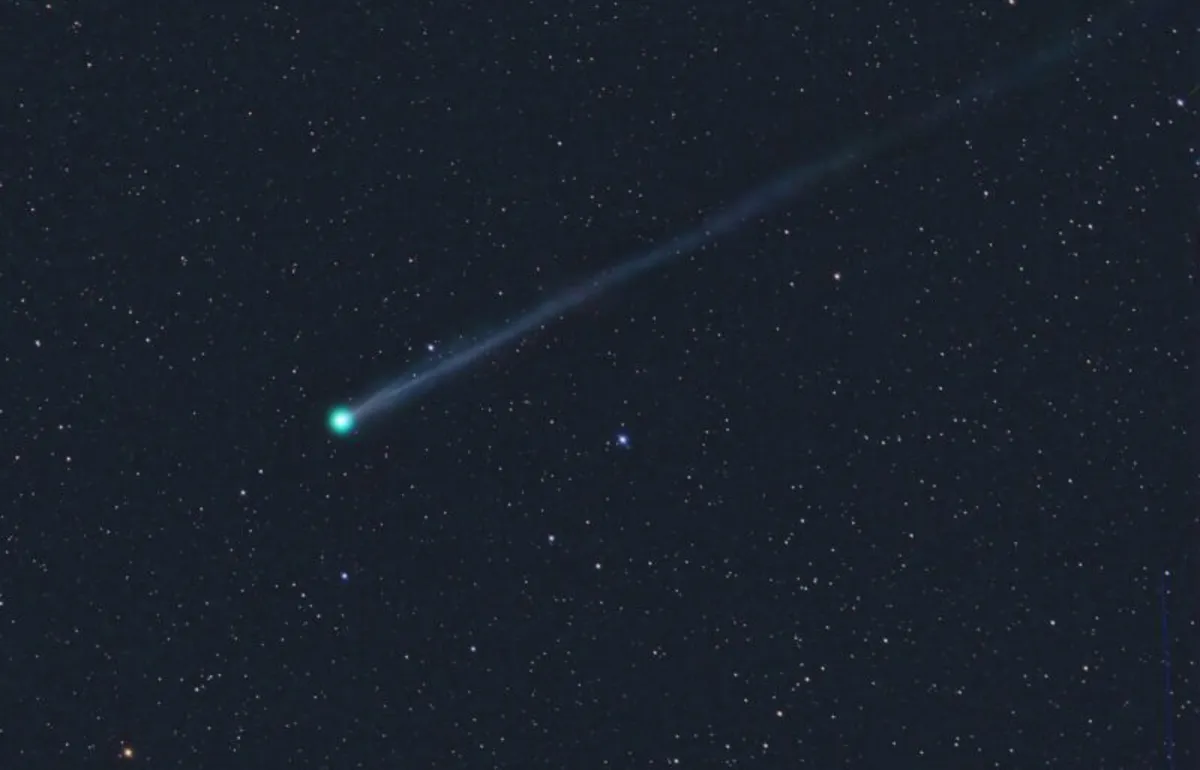
The 2025 EarthSky lunar calendar is officially here! This unique and stunning poster-sized calendar features the phases of the moon for every night of the year. Whether you're an astronomy enthusiast or simply love the beauty of the night sky, this calendar is a perfect addition to your home or office. Don’t miss out—get yours today and stay connected to the lunar cycles throughout the year!
Exciting news for stargazers: there’s a new comet speeding toward the sun, and it's visible with binoculars in the morning sky! Named SWAN25F after the Solar and Heliospheric Observatory (SOHO) instrument, which is part of the European Space Agency, this comet was first detected by Australian amateur astronomer Michael Mattiazo. On April 1, he reported seeing this striking comet in the latest images captured by SOHO.
To catch a glimpse of Comet SWAN25F, look toward the east-northeastern horizon just before sunrise. Although the comet is gradually brightening, binoculars or a small telescope will be necessary for viewing at this stage. The good news is that if the comet survives its perihelion—its closest approach to the sun—in just a few weeks, it could become visible during sunset as well.
As for how bright the comet will become, that remains uncertain. Comets can be quite unpredictable, but if SWAN25F survives its closest approach to the sun, it is expected to transition from the dawn sky to the dusk sky during the early days of May. Observers may notice the comet’s high speed as it shifts position at each sunset.
Preliminary observations indicate that the closest approach to Earth and the sun will occur on the same day—May 1, 2025. At this time, the comet will be approximately 31 million miles from the sun, just inside the average orbit of Mercury. When it reaches its closest point, the comet’s brightness could range between magnitudes 4.5 to 5, though it may be quite low on the horizon.
During the early days of April, Comet SWAN25F has been located within the Great Square of Pegasus, moving toward Andromeda, the Chained Lady. One of the stars of the Great Square, Alpha Andromedae (or Alpheratz), can help you pinpoint the comet's location. Look for the comet to pass near Alpheratz around April 13, 2025.
This new comet appears as a small green sphere, indicating that its coma—the cometary atmosphere—contains reactive molecules known as diatomic carbon (C2). These molecules emit a green hue when illuminated by sunlight. Long-exposure images are revealing a faint tail extending over two moon diameters. The latest reported brightness of the comet is between magnitudes 8 to 7.5 and is improving, with lower numbers indicating greater brightness.
In summary, Comet SWAN25F is approaching the sun and is currently visible with binoculars in the morning sky. Keep an eye on its progress, and we will continue to provide updates on this fascinating celestial event. Don’t miss your chance to witness this spectacular comet as it makes its journey through our solar system!